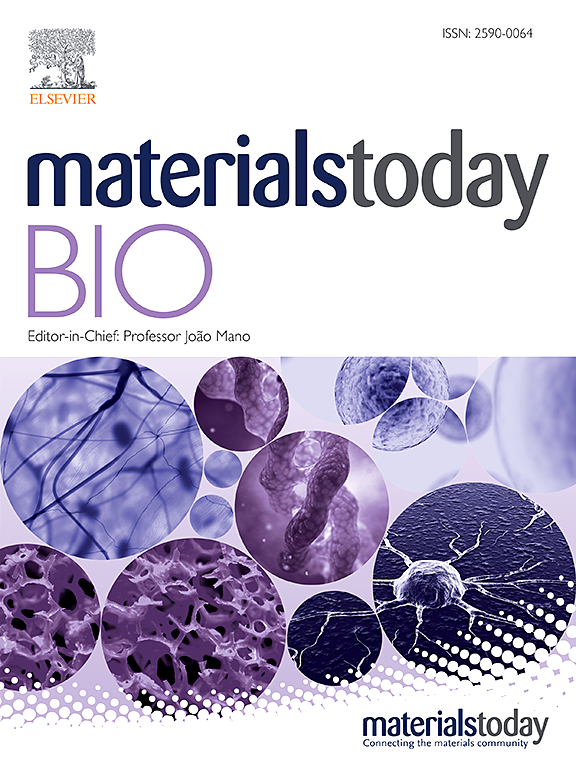Multi-active phlorotannins boost antimicrobial peptide LL-37 to promote periodontal tissue regeneration in diabetic periodontitis
IF 8.7
1区 医学
Q1 ENGINEERING, BIOMEDICAL
引用次数: 0
Abstract
The bidirectional correlation between diabetes and periodontitis positions the latter as the most prevalent complication of the former. Rehabilitation of the periodontal tissues damaged by diabetic periodontitis presents a significant clinical challenge. The multifaceted nature of the pathogenesis of diabetic periodontitis necessitates a comprehensive approach in its treatment to mitigate its adverse effects. To address this, a temperature-sensitive hydrogel containing phlorotannins (PL) and antimicrobial peptide LL-37 was developed to shift the microenvironment of diabetic periodontitis from an exacerbated high-glycemic inflammatory state to a regenerative one. The addition of PL significantly enhanced the antimicrobial properties, stability, and safety of LL-37. Vitro experiments confirmed that PL/LL-37 had good biocompatibility and promoted osteogenic differentiation of bone. PL/LL-37 demonstrated antioxidant properties by scavenging DPPH free radicals and inhibiting NO production. Furthermore, PL/LL-37 effectively modulated macrophage polarization from a M1 phenotype to an M2 phenotype through NF-κB P-p65 inflammatory pathway, thereby reducing the release of pro-inflammatory cytokines and promoting the secretion of anti-inflammatory cytokines. Interestingly, it could downregulate the AGE-RAGE signaling pathway, exerting a protective effect against diabetes. In addition, PL/LL-37 could attenuate inflammation levels, inhibit osteoclast production, promote bone regeneration, inhibit apoptosis and decrease RAGE levels in a rat model of diabetic periodontitis. These combined features synergistically accelerate diabetic periodontal bone regeneration. Consequently, PL/LL-37 emerges as a promising candidate for clinical treatment of diabetic periodontitis.

求助全文
约1分钟内获得全文
求助全文
来源期刊

Materials Today Bio
Multiple-
CiteScore
8.30
自引率
4.90%
发文量
303
审稿时长
30 days
期刊介绍:
Materials Today Bio is a multidisciplinary journal that specializes in the intersection between biology and materials science, chemistry, physics, engineering, and medicine. It covers various aspects such as the design and assembly of new structures, their interaction with biological systems, functionalization, bioimaging, therapies, and diagnostics in healthcare. The journal aims to showcase the most significant advancements and discoveries in this field. As part of the Materials Today family, Materials Today Bio provides rigorous peer review, quick decision-making, and high visibility for authors. It is indexed in Scopus, PubMed Central, Emerging Sources, Citation Index (ESCI), and Directory of Open Access Journals (DOAJ).
 求助内容:
求助内容: 应助结果提醒方式:
应助结果提醒方式:


